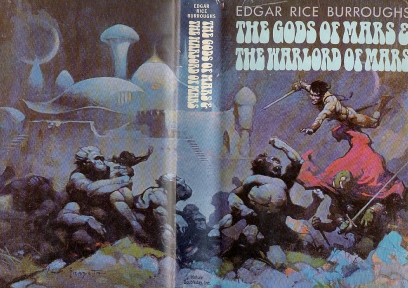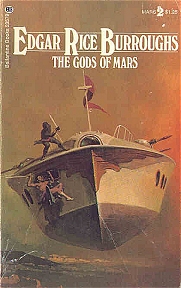“Skeleton Key”
Oh my. For my money, the current storyline in Detective Comics, focussing on James Gordon Jr., is the best going right now. Wow. Between Scott Snyder's wonderfully atmospheric writing and Francesco Francavilla's clean yet moody pulp/noir art – perfect for Batman – I swear they just don't miss a beat. It wasn't until I was flipping through this issue a moment ago before I sat down to blog it that I realized – Batman doesn't even appear! And I didn't even miss him.
So what happened? Briefly, we find that Barbara's conviction and James Sr.'s fears are right on target. James Jr. is a psychopath – worse, he's a diabolical genius psychopath far more fearsome than even The Joker because he's so detached. At least for me. I mean, as wonderful (gosh that comes out really sick when I see it written) as The Joker's madness is – graphically shown in this very issue in a sequence that runs parallel to Barbara and her father discovering James Jr.'s plan – Junior's comes across as even more creepy. We've come to expect such from The Joker. We've hoped (okay, maybe not as a reader for the sake of a good story, but in empathy with his father which is another sign of Snyder's writing ability) that James Jr. would not turn out as I'm sure we knew it would. And when he does … whoa! And yet it's all so understated in contrast with The Joker.
I can't recommend this enough, and I am so glad that Scott Snyder is staying with Batman in the New 52 … I just wish he remained paired with Francesco Francavilla.
“Here Endeth The Lesson”
Well, fanboy stalker superhero wannabe Grey Ghost got his – issue before last, I believe, because of the mission in the UK (that we only saw the beginning of last issue – which was to be continued in Batman Incorporated #9, which I've not read yet). That diversion is dealt with in a rather heated exchange with her GCPD detective contact, who demands of her, “Why in the hell would you leave town in the middle of an investigation?” “I didn't really have a choice – ” Stephanie shrugs, “ – it's not like I wanted to go.” “Since when do you listen to anyone?” “This wasn't just 'anyone'.” Of course, their confrontation has a deeper meaning – his hitherto undisclosed connection to their case – as well as that they are standing over Grey Ghost's broken body. They listen to his last message, that brought them to the scene – “You look like you're going to throw up,” the detective tells her. “Haven't felt … this … this guilty in a very long time,” she responds.
Of course, then it's his turn to look sick as they learn that the three goons in high-tech combat suits have just ravaged a station downtown (we got to see it in the opening pages), killing several good people and stealing the fast dude's (can't remember his name) speedsuit from several issues back. And now they're breaking him out of Blackgate while sparking a riot to keep everyone occupied while they find and murder their “client.” Stephanie drops in, fights them and holds her own long enough to coax out of them what's up, then … “Any famous last words?” the grey-armored one asks. “Just one,” Steph grits out before shouting, “'SHAZAM'!” Not what he'd expected to hear – “Wait … guys, she isn't magic, right?” Pleastellmeyouheardthat Pleasetellmeyouheardthat Stephanie thinks, but says, “Depends on who you ask. Or is that 'whom'?” as an INCOMING. SIDEWAYS. SIGNAL. PLEASE. STAND. CLEAR. frazzles their electronics. It's Stephanie's backup – call 'em the “Junior Birds of Prey” (that's just me): Stargirl, Bombshell, Miss Martian, and Supergirl. The odds are a bit more evenly matched. Well, not really. The teen girl heroes make short work of the Reapers. Then Stephanie rushes to find out who “the client” is … “DADDY?!” Oh my.
This is just so good – in a very different way from Detective Comics. There's just such a sense of fun in Stephanie Brown's adventures as Batgirl. I've said it before – I'll say it again next month – I'm going to miss the hell out of this title come September! Bryan Q. Miller is such a good writer. I quoted only snippets of the snappy dialog that this issue just bursts with. Pleasetellmehe'sstillwritingforDC Pleasetellmehe'sstillwritingforDC
“7 Days of Death, Part Three: The Bigger Picture”
The Assassination Tournament comes to an end – with Timothy Drake as the winner.... This is a very good issue, but I fear for where the next (last issue) of Red Robin is going to take him.
It opens immediately from last issue with the babe assassin about to have her way with him. I'm about to get attacked by a “Daughter of Acheron” – half sister of Ra's al Ghul. And by 'attacked' I mean, “A Very Special Episode” kind of attacked. The worst part: I keep thinking, “Isn't this pretty much how we ended up with Damian?” ROFL. Of course, Tim has brought “protection” – in the form of Cassandra Cain, one-time “Batgirl,” now The Black Bat, Hong Kong operative for Batman, Inc. – who makes short work of Tim's captors. Before herself skewering him through the heart from behind.
Honestly, not the image I thought I was going to see turning the page – rarely am I so startled when reading a comic. Anyway, Tim's blood activates the doorway opening a chamber deeper into the catacombs – but of course it all turned out to be a scam. Tim and Cass faked his death to gain entrance. Then they have an interesting exchange with the still-unseen master of the Tournament, who it seems has been at this for a very long time. “An immortal?,” Tim asks, “Vandal Savage?” “I've met the man. A bit too … neolithic for my tastes.” Uh … no, Vandal's way older than that – paleolithic by several tens of thousands of years. But anyway, it's all for the greater good. The Tournament is meant to draw “lethal killers out into the open. Many are captured or identified. The deadliest of them, potential scourges of their age, wind up dead in the catacomb.” And now he means Tim, who beat the game, to be his replacement. But not necessarily yet – discovered, it's time to blow this joint, and self-destructs leave a big crater in the city of Paris from which Tim and Cass barely escape.
Back in Gotham City, it is revealed that Lucius Fox is still alive (which we knew) – but Tam has seen a new side of Tim, one that she doesn't like, and she walks out of his life, maybe forever...?
Then there's an odd page, that I think may be a relic of what was planned and then truncated by the Relaunch – a page recounting a teamup of Red Robin and Black Bat in Hong Kong. I am glad that the writers were given enough time to gracefully bring their main story arcs to an end by August, but I think that meant some sacrifices in preplanned stories along the way, things that needed to be skipped or (as in this case) summarized quickly. In any case, that adventure left Tim pretty beat up – a broken arm, dislocated shoulder, three cracked ribs and a dislocated jaw.
Then there's the closing couple of pages, where we find that Tim maybe is taking a darker turn – toward what the “Assassination Tournament Master” intends.... Six weeks later, still beat up from Hong Kong but surveying the new underground base he's used the time to put together, he ponders what that mysterious voice had said, and wonders: Does the beginning of everyting I'm going to become mean the end of everything I've always wanted to be? He presses a button. Guess we'll find out … considering I just assassinated Captain Boomerang. The man who killed his father. “To Be Concluded!”
“War and Remembrance, Part One”
Well, Birds is going out with a two-parter by Marc Andreyko, presumably giving Gail Simone a jump on getting ahead on the new Batgirl as well as Fury of Firestorm. In my opinion, he would have been a good writer for Birds in any case, having proven he can write strong heroic women through his run on Manhunter. He also proved he has a great respect for DC's rich heritage, incorporating into that series Sandra Knight, the original half-dressed super-heroine Phantom Lady, as the grandmother (I believe) of Kate Spencer. Both of those characters appear in this story, along with the Birds of Prey, especially those having ties to the World War II era when the original Phantom Lady had her adventures – Lady Blackhawk, herself a time-transposed native of that era, and Black Canary, whose mother and namesake fought in the same period. And the plot transcends the eras as well, having its roots in a “black ops” mission undertaken in 1950 by Phantom Lady, Lady Blackhawk, and the original Black Canary on behalf of the US government against a fugitive Nazi in Argentina (“for plausible deniability”). Basically this issue just sets the story up, with Dinah, Zinda, and Sandra appearing at the Gotham Veterans' Hospital's Greatest Generation Charity Auction. By the end of the issue Sandra and Zinda have been abducted and hooked into some apparatus the purpose of which is to facilitate the resurrection of their captors' “creator and bring about a new Reich.” It's clearly a “filler” story to play out time, but on that level the story's pretty good.
My main complaint with this issue is the art. There's been a lot of this lately at DC, presumably also related to the shakeup in preparation for the Relaunch, but sometimes the use of multiple artists in a single issue is pulled off better and sometimes worse. This time it's decidedly “worse.” The contrast between the beginning of the issue, which is pretty good – I think it's by Billy Tucci with his own inks – and the end – Adriana Melo with J. P. Mayer inks, I think – is jarring. I don't know quite how to characterize the latter art except for “bad.” Kate Spencer in particular looks nothing like she appeared in her own series or the Detective Comics co-features. It looks like some weird blend of Gil Kane on a bad day and some Manga sensibility. Whatever. I did not like it. I hope they got somebody else for the next issue.
Cheers!

























